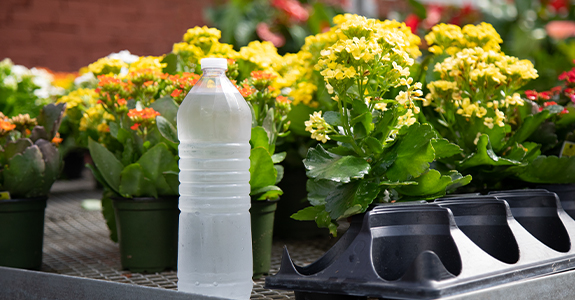The benefits of managing heat safety proactively
An effective heat safety program can:
Lead to fewer injuries and health issues
Lower medical and workers’ compensation costs
Build better morale and worker retention

Working in hot weather is likely part of day-to-day operations when it comes to your horticultural business—especially during summer months. But without the right precautions, extreme heat can quickly pose health and safety risks for your employees.
According to the Environmental Defense Fund, the average U.S. agricultural worker is exposed to 21 working days each year that are unsafe due to heat. The National Library of Medicine reports these workers are 35 times more likely to suffer fatal heat-related illness compared to workers in other industries.
For outdoor horticultural teams, managing heat stress in the workplace isn’t just about comfort—it’s about protecting health, maintaining productivity, and conducting safe and efficient operations.
The good news is you can take practical, proactive steps to help reduce the risks of heat-related illness and safeguard your workers and business.
With OSHA expected to release a heat illness prevention standard in the near future, now is the time to review and reinforce your heat safety protocols.
Horticultural workers often labor under direct sun, inside greenhouses, or near equipment that generates radiant heat. These conditions increase the likelihood of heat stress—a combination of high temperatures, humidity, and physical exertion that can overwhelm the body’s ability to cool itself.
Along with causing discomfort, heat stress can have real consequences on your team’s long-term well-being and performance. When exposed to high temperatures, workers may experience:
Fatigue
Reduced concentration
Slower reaction times
These impairments increase the risk of errors, accidents, and poor work quality. Over time, prolonged heat exposure can also result in serious health issues, such as cardiovascular strain, kidney damage, and even heat stroke, which can be fatal without timely intervention.
As an employer, you’re responsible for providing a safe working environment. That responsibility becomes even more critical as temperatures rise.
Early intervention is key to helping prevent serious health issues. Train your employees and supervisors to monitor for the following symptoms of heat stress:
Fatigue
Heavy sweating
Dizziness or fainting
Headaches
Muscle cramps
Rapid heartbeat
Nausea or vomiting
When caught early, many of these symptoms can be treated with rest, hydration, and cooling measures. Left unchecked, they may escalate into medical emergencies like heat exhaustion or heat stroke, which require immediate attention.
An effective heat safety program can:
Lead to fewer injuries and health issues
Lower medical and workers’ compensation costs
Build better morale and worker retention
As part of our overall commitment to our customers, our safety services team is here to support your business. From team training to site-specific risk assessments, we can help you build and maintain a heat safety program for your workplace. Contact us today to learn more.



The information in this article is for informational or entertainment purposes only. View our disclaimer by going to terms and conditions and clicking on Learning Center disclaimer in the table of contents.